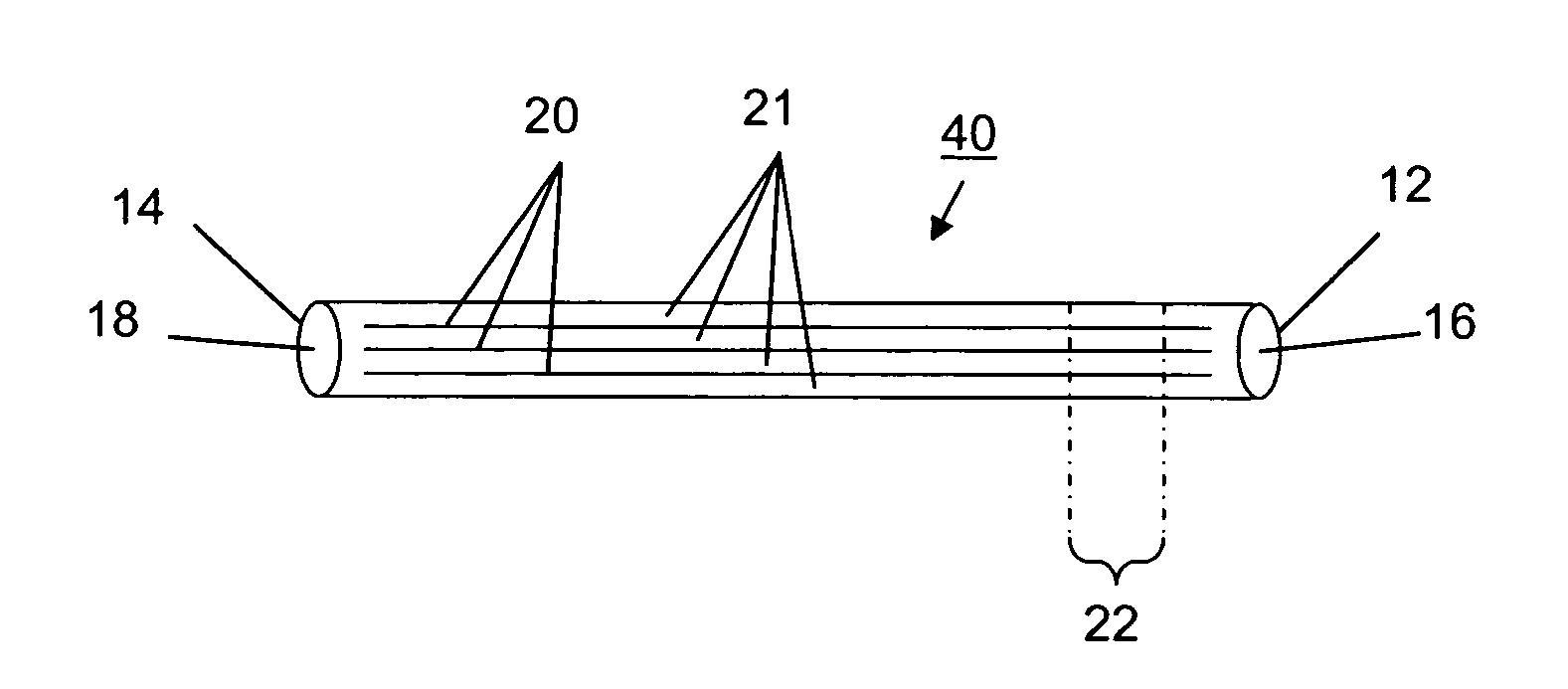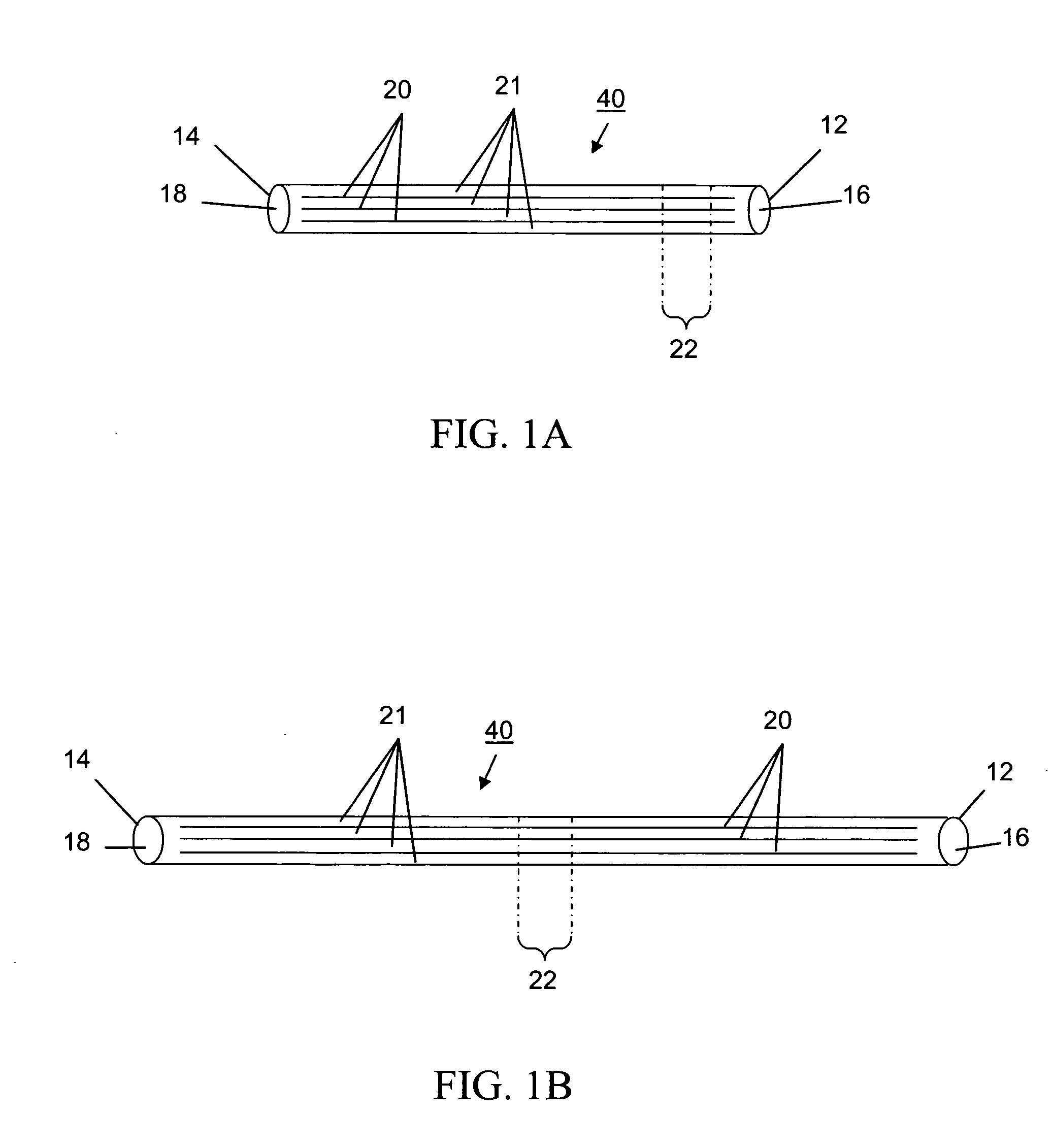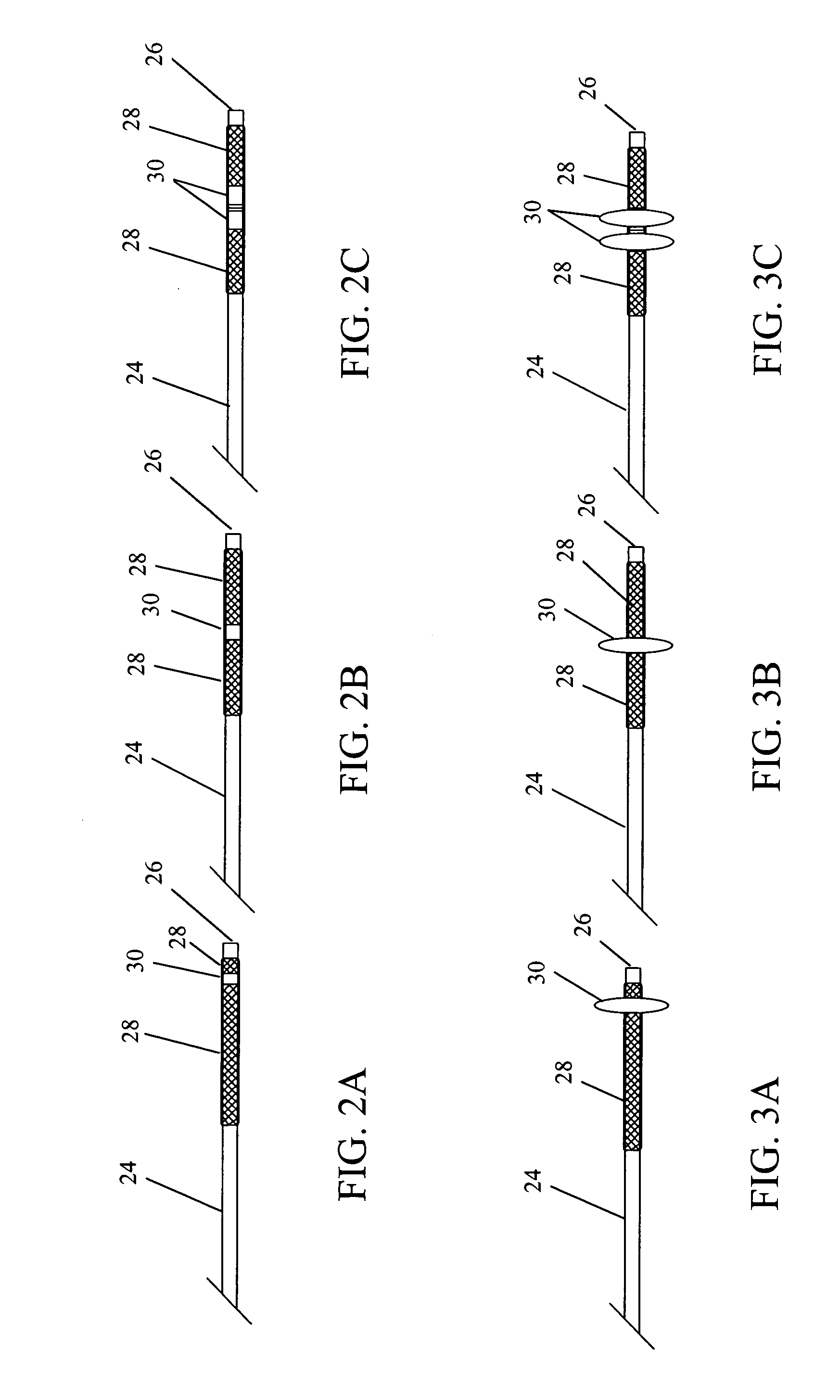Devices and methods for disruption and removal of luminal occlusions
- Summary
- Abstract
- Description
- Claims
- Application Information
AI Technical Summary
Benefits of technology
Problems solved by technology
Method used
Image
Examples
example 1
Construction of a Thrombectomy Device
[0074] A thrombectomy device of the subject invention has been made in a modular fashion. The device consists of an elastomeric polymer tube of an appropriate size and a balloon catheter.
[0075] Tubes were made from CARBOSIL 40 90A (The Polymer Technology Group, Inc., Berkeley, Calif.), a solution grade elastomeric, tear-resistant silicone-polyurethane thermoplastic copolymer, by the dip-coating method. Several 21 (0.80 mm outer diameter, OD) gauge injection needles (MONOJECT from Sherwood Medical, St. Louis, Mo.) were used as mold substrates. Each needle was 1.5 inches long and the size (OD) of the needle represents approximately the inner diameter (ID) of the resulting tube. Two times dipping of each needle in 15 wt% polymer solution in tetrahydrofuran (THF) at about a 4 mm / sec withdrawal rate and a 30 minute interval between two successive dippings formed an approximately 90 μm thick polymer coating. Coated needles were then vacuum-dried. Coa...
example 2
Mechanical Testing of a Modified Balloon Under Applied Saline Pressure
[0080] To determine the inflated balloon size with respect to the applied saline pressure, the device was installed on a micromanipulator. Using a digital inflation device and fluid dispensing syringe (MONARCH 25, MERIT MEDICAL SYSTEMS, Inc., South Jordan, Utah) the saline pressure was applied. The micromanipulator read the inflated balloon diameter quite accurately at different saline pressures. The digital inflation device showed the applied saline pressure directly. A plot (calibration curve) of balloon diameter versus saline pressure was constructed as shown in FIG. 6. A control experiment with a bare balloon was performed and compared with the device. As expected, higher pressure was required to inflate the modified balloon in the device. This type of calibration curve will be helpful for both in vitro and in vivo device operation.
example 3
In Vitro Performance Testing of the Thrombectomy Device in Silicone Tubing
[0081] 40 cm long silicone tubing (ID 2.5 mm) was selected for the preliminary in vitro performance testing of the device 60. Two syringes were placed at both ends of the tube 61. Due to the flexible nature of the tube 61, an approximately tortuous shape could be given without kinking, as shown in FIG. 7A. Rabbit blood clots were used as models for the experiment. 1 ml of blood was allowed to coagulate in a 7 ml sterile blood collection tube for a period of 1 hour. The tube 61 was then opened and the bulk clot was removed and cut in half. Each section was weighed and recorded. The silicone tube 61 was prepared by flushing it with saline solution to remove any air bubbles from the tube 61. The blood clot was placed in a 3ml syringe and injected into the silicone tube 61. Saline was then injected into the silicone tube 61 until the clot reached approximately 20 cm from the proximal end (first end, 62) of the tu...
PUM
 Login to View More
Login to View More Abstract
Description
Claims
Application Information
 Login to View More
Login to View More - R&D
- Intellectual Property
- Life Sciences
- Materials
- Tech Scout
- Unparalleled Data Quality
- Higher Quality Content
- 60% Fewer Hallucinations
Browse by: Latest US Patents, China's latest patents, Technical Efficacy Thesaurus, Application Domain, Technology Topic, Popular Technical Reports.
© 2025 PatSnap. All rights reserved.Legal|Privacy policy|Modern Slavery Act Transparency Statement|Sitemap|About US| Contact US: help@patsnap.com



